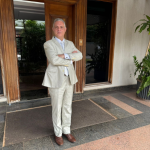In the heart of the Vatican, a significant and secretive event is about to unfold, marking the beginning of the conclave to elect a new pope. This solemn and highly anticipated ceremony will see cardinals from around the world gathering in the Sistine Chapel to cast their votes for the leader of the Catholic Church. As the Vatican prepares for the conclave, all eyes are on the process that will determine the future direction of one of the world’s oldest and most influential religious institutions.
The conclave process, steeped in centuries of tradition, begins with a formal ceremony that emphasizes the gravity of the responsibility entrusted to the cardinals. With a sense of awe and reverence, they will enter the Sistine Chapel, where they will be cloistered from the outside world until a new pope is chosen. The secrecy surrounding the conclave is paramount, with strict rules in place to ensure that no information leaks to the outside world during the voting process.
In recent years, the election of a new pope has become a subject of intense scrutiny and public interest, with the media and the faithful eager to learn about the cardinals’ choices and the outcome of the conclave. However, despite the intense public attention, the conclave itself remains an intensely private affair. The cardinals will deliberate and vote in silence, keeping their decisions a closely guarded secret until the moment a new pope is selected.
The conclave to elect a new pope is not only a religious event but also a momentous political one. The choice of pope has far-reaching implications for the future of the Catholic Church, shaping its doctrines, global presence, and relationships with other faiths. As such, the cardinals’ decision-making process will be influenced by a wide range of factors, from the church’s need for reform to its approach to modern issues such as climate change, social justice, and interfaith dialogue.
Leading up to the conclave, many have speculated about the possible candidates who could emerge as the next pope. While no formal campaigning takes place, certain cardinals are seen as frontrunners due to their experience, leadership qualities, and ability to unite different factions within the Church. These cardinals bring unique perspectives to the table, which will play a significant role in shaping the future direction of the Church.
Once the conclave begins, the cardinals will engage in a series of votes to determine the new pope. A cardinal must receive a two-thirds majority to be elected, which means that the process can be lengthy, with multiple rounds of voting. During this time, tensions can run high, as each vote brings the cardinals closer to a decision that will have a profound impact on the Church and its followers around the world.
As the conclave unfolds, there will be little to no external communication with the outside world, ensuring that the process remains as private as possible. This secrecy is designed to protect the sanctity of the election and prevent any undue influence from external forces. It is also a reflection of the deep reverence the Catholic Church has for this moment in history, where the future of the faith is decided behind closed doors.
Once the new pope is elected, the world will be watching as the white smoke rises from the chimney of the Sistine Chapel, signaling that a decision has been made. The new pope will then appear on the balcony to address the faithful, marking the end of the conclave and the beginning of a new era for the Catholic Church. The election of a new pope is not only a turning point for the Church but also a moment of reflection for millions of Catholics around the world, as they look to the future with hope and anticipation.
Author: Clodayre Daine









